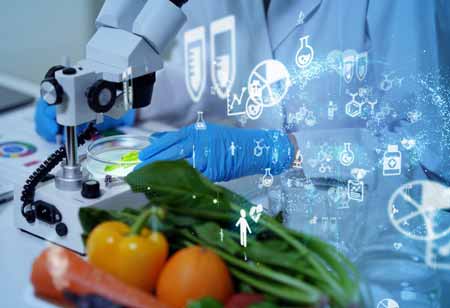THANK YOU FOR SUBSCRIBING
Food Science and Emerging Technologies
Food and Beverage (F&B) companies faced several key challenges during the initial days of the pandemic, particularly in terms of their delivery, supply chain, and last-mile logistics.

By
Apac CIOOutlook | Wednesday, November 03, 2021
Stay ahead of the industry with exclusive feature stories on the top companies, expert insights and the latest news delivered straight to your inbox. Subscribe today.
Food producers are increasingly using internet of things (IoT) technologies to track the handling of food ingredients and finished products throughout the value chain, as well as monitor environmental conditions during shipment.
Fremont, CA: Food and Beverage (F&B) companies faced several key challenges during the initial days of the pandemic, particularly in terms of their delivery, supply chain, and last-mile logistics. Shelter-in-place orders made shopping frustrating and risky, further complicated by social-distancing and dining restrictions forced people to make more meals at home. Proactive grocery shops became e-trade for online ordering. As the pandemic took hold, F&B companies re-evaluated their supply chains and business models and invested in new technologies to make themselves more resilient and agile moving forward.
Consumer-centric strategies continue to drive F&B innovation, such as consumers being more interested in healthier foods that boost immune system performance. Therefore, personalized nutrition, research interest in the microbiome is also rising. Another trend catching up is the demand for artisan-style home-cooking, which is re-creating the restaurant experience at home using pre-packaged meal kits and restaurant-branded products. Customers prefer F&B products that provide homemade convenience. For example, air fryers and multi-cookers posted double-digit dollar sales growth over the last year, meaning many households now have these appliances on hand.
The pandemic has exacerbated consumer trends to increase transparency about the origin and supply chain history of the products they buy and consume. Transparency across the entire supply chain is robust consumer demand in 2021. Technologies that will improve transparency include RFID tracking materials throughout the supply chain and wireless technologies such as invisible barcodes. Besides, food producers are increasingly using the internet of things (IoT) technologies to track the handling of food ingredients and finished products throughout the value chain and monitor environmental conditions during shipment.
As the world enters the second year of the pandemic, transformations influence shopping and eating preferences. Food and beverage companies must be flexible to invest in technology and respond quickly to ever-changing conditions to remain competitive. Furthermore, transparency throughout the supply chain will dominate in the coming years. Consumers will continue to look for brands that can build trust, offer authentic and trustworthy products, and build consumer trust in current and post-pandemic environments.





